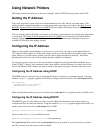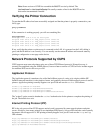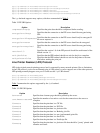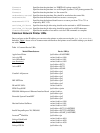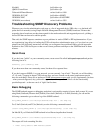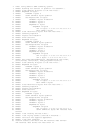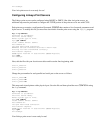
ipp://ip-address-or-hostname/resource?option=value
ipp://ip-address-or-hostname/resource?option=value&option=value
ipp://ip-address-or-hostname:port-number/resource
ipp://ip-address-or-hostname:port-number/resource?option=value
ipp://ip-address-or-hostname:port-number/resource?option=value&option=value
The ipp backend supports many options, which are summarized in Table 2.
Table 2: IPP URI Options
Option Description
compression=gzip Specifies that print data should be compressed before sending.
encryption=always
Specifies that the connection to the IPP server should be encrypted using
SSL.
encryption=ifrequested
Specifies that the connection to the IPP server should only be encrypted if
the server requests it.
encryption=never Specifies that the connection to the IPP server should not be encrypted.
encryption=required
Specifies that the connection to the IPP server should be encrypted using
TLS.
version=1.0
Specifies that version 1.0 of the IPP protocol should be used instead of the
default version 1.1.
waitjob=false Specifies that the IPP backend should not wait for the job to complete.
waitprinter=false
Specifies that the IPP backend should not wait for the printer to become
idle before sending the print job.
Line Printer Daemon (LPD) Protocol
LPD is the original network printing protocol and is supported by many network printers. Due to limitations
in the LPD protocol, we do not recommend using it if the printer or server supports one of the other protocols.
LPD printing normally happens over port 515 and uses the lpd URI scheme:
lpd://ip-address-or-hostname/queue
lpd://ip-address-or-hostname/queue?option=value
lpd://ip-address-or-hostname/queue?option=value&option=value
Table 3 summarizes the options supported by the lpd backend.
Table 3: LPD URI Options
Option Description
banner=on Specifies that a banner page should be printed by the server.
contimeout=seconds
Specifies the number of seconds to wait for the connection to the server to
complete.
format=c Specifies that the print data is a CIF file.
format=d Specifies that the print data is a DVI file.
format=f Specifies that the print data is a plain text file.
format=g Specifies that the print data is a Berkeley plot file.
format=l Specifies that the print data is a raw (preformatted) print file.
format=n Specifies that the print data is a ditroff file.
format=o Specifies that the print data is a PostScript file.
format=p
Specifies that the print data is a plain text file that should be "pretty" printed with
a header and footer.



